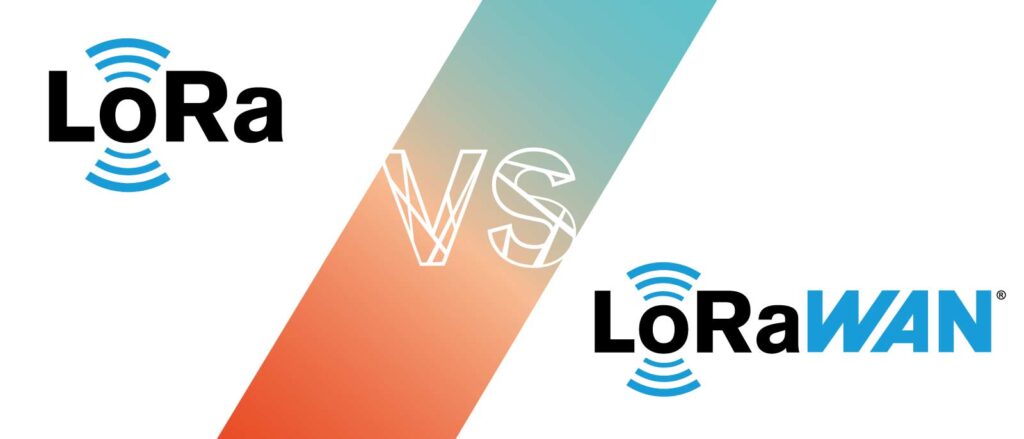

In the rapidly evolving landscape of the Internet of Things (IoT), two technologies have emerged as pivotal enablers of long-range communication capabilities: LoRa® (Long Range) and the end-to-end standard architecture, LoRaWAN® (Long Range Wide Area Network). These technologies are reshaping how devices communicate over vast distances, leveraging low power to achieve connectivity that is both scalable and sustainable. This introduction sets the stage for a comprehensive exploration of LoRa® and LoRaWAN®, detailing their architecture, applications, and the transformative impact they have on the IoT domain.

LoRa® is a digital wireless data communication IoT technology that uses a spread spectrum modulation technique derived from chirp spread spectrum (CSS) technology. It stands out in the IoT technology landscape for its ability to maintain reliable wireless communication over long distances while consuming very little power. This capability makes it uniquely suited for creating networks of devices spread across extensive geographic areas, from urban environments to rural settings, without the need for costly infrastructure enhancements.
Building on the capabilities of LoRa®, LoRaWAN® defines the communication protocol family and system architecture for the network while utilizing the LoRa® physical layer. LoRaWAN® capitalizes on the robust long-range capabilities of LoRa® and introduces crucial network functionality including device classes, adaptive data rate, fragmentation and roaming processes. By formalizing these aspects, LoRaWAN® transforms the potential of LoRa® into practical, scalable applications for smart cities, agriculture, industry, and beyond.
The significance of LoRaWAN® in the IoT landscape cannot be overstated. As the number of connected devices continues to grow exponentially, the need for efficient, long-range communication solutions becomes increasingly critical. LoRaWAN® address this need by providing :
Allowing data to be transmitted over distances of up to 15 kilometers in rural areas and up to 5 kilometers in urban settings, significantly reducing the infrastructure needed for wide-scale IoT deployments.
Enabling devices to run for years on a single battery charge, which is vital for IoT applications where frequent battery replacement is impractical.
Offering built-in end-to-end encryption to ensure that data transmitted across the network remains secure from unauthorized access.
These attributes make LoRaWAN® indispensable for a wide range of IoT applications, from environmental monitoring and smart metering to asset tracking and smart city infrastructure management.
This article aims to demystify the technical foundations of LoRaWAN®, providing readers with a clear understanding of how these technologies work, their benefits, and their limitations. By delving into the core aspects of the network architecture and its operational dynamics, readers will gain insights into how to leverage these technologies for their IoT projects. The article will cover:
By the end of this article, readers will be equipped with the knowledge to assess LoRaWAN® can be integrated into their IoT solutions to enhance connectivity, extend device life, and ensure secure communication across extensive networks. This understanding will be critical for anyone looking to harness the potential of IoT to drive innovation and efficiency in their operations or products.
LoRa® (Long Range) technology is a pivotal development in the field of Internet of Things (IoT), enabling long-range wireless communication with minimal power consumption. This chapter explores the intricacies of LoRa technology, focusing on its physical layer, the inherent benefits and limitations, and its suitability for various IoT applications.
LoRa® technology utilizes a modulation technique known as Chirp Spread Spectrum (CSS) along with low-power wide-area network (LPWAN) protocols to enable long-range transmissions. This technology is designed to facilitate communication between IoT devices over distances that far surpass traditional wireless methods. It operates in the sub-gigahertz radio frequency bands like 868 MHz (Europe) and 915 MHz (North America), making it an ideal solution for avoiding the crowded 2.4 GHz spectrum used by Wi-Fi, Bluetooth, and other forms of communication.
The physical layer, or PHY, of LoRa is where the core technology of CSS plays a crucial role. CSS utilizes wideband linear frequency modulated pulses that vary in frequency, making LoRa® signals robust against channel noise and highly capable of penetrating through obstacles like buildings and trees, which is a significant advantage over other modulation techniques:
The PHY layer encodes information in multiple chirp signals spread across the frequency spectrum. This spread allows for increased data resilience and robustness, enabling long-range communication even in noisy environments.
The main benefits of LoRa's physical layer include:
Despite its advantages, LoRa technology also has some limitations:
By understanding the fundamental aspects of LoRa’s physical layer, its benefits, limitations, and potential applications, stakeholders can better assess how to integrate this technology into their IoT strategies. This foundation sets the stage for exploring how LoRaWAN builds on these capabilities to create comprehensive network solutions, which is covered in the subsequent chapters.
LoRa is particularly suited for IoT deployments where long-range connectivity and low power consumption are required. Its applications are diverse, including:
The PHY layer encodes information in multiple chirp signals spread across the frequency spectrum. This spread allows for increased data resilience and robustness, enabling long-range communication even in noisy environments.
For tracking soil moisture and conditions across vast farms.
For utilities to monitor water, gas, electric usage effectiv
The PHY layer encodes information in multiple chirp signals spread across the frequency spectrum. This spread allows for increased data resilience and robustness, enabling long-range communication even in noisy environments.
For tracking soil moisture and conditions across vast farms.
For utilities to monitor water, gas, electric usage effectiv
These applications benefit significantly from LoRa’s ability to provide long-range connectivity and penetrate through dense infrastructures, where other wireless technologies might fail. The technology is particularly effective in scenarios where networks need to cover a large area with minimal energy and maintenance cost, making it an essential tool for a wide range of IoT applications.
By understanding the fundamental aspects of LoRa’s physical layer, its benefits, limitations, and potential applications, stakeholders can better assess how to integrate this technology into their IoT strategies. This foundation sets the stage for exploring how LoRaWAN builds on these capabilities to create comprehensive network solutions, which is covered in the subsequent chapters.
Building upon the foundational technology of LoRa, LoRaWAN (Long Range Wide Area Network) defines the communication protocols and network architecture that harnesses LoRa’s capabilities to create efficient, scalable, and secure networks. This chapter explores the structure of LoRaWAN®, its protocol, the interaction of its key components, and how it extends LoRa’s utility for broader IoT applications.
LoRaWAN is a protocol for high-capacity, long-range communication networks, designed specifically to connect battery-operated devices to the Internet in local, regional, national, or global networks. It optimizes the excellent range and low power consumption properties of LoRa® for widespread use across various sectors. LoRaWAN ensures secure, bi-directional communication and is predominantly used in deploying IoT networks that require minimal power consumption and routine wireless communication over long distances.
LoRaWAN operates on a star-of-stars topology where gateways act as transparent bridges, relaying messages between end-devices and a central network server in the backend :
These are the bridge between the end-devices and the network server, receiving messages from multiple end-devices and transmitting them to the network server. Unlike traditional base stations, LoRaWAN gateways do not process any data; instead, they forward the data packets to the network server.
The central piece of the LoRaWAN® architecture, the network server manages the network, including data rate, frequency, and repetition settings. It handles the routing of packets, checks for data integrity, and performs security checks.
These devices are typically sensors or actuators that communicate with gateways over the LoRa physical layer, using the LoRaWAN® protocol to manage communication.
Once the data reaches the network server, it is forwarded to application servers, where it is processed and integrated into end-user applications. These servers are responsible for data interpretation, user interface presentation, and executing application-specific logic.
LoRaWAN builds on the LoRa technology by adding a layer of sophistication in network management and communication protocols. While LoRa defines the physical layer, LoRaWAN defines the communication and system architecture for the network, enabling advanced features like secure network setup, efficient battery usage, and capacity optimization. This structure allows LoRaWAN to support millions of end-devices connected to a single network.
Implementing LoRa® and LoRaWAN® technologies involves understanding the necessary hardware and software components, along with strategic setup and configuration steps. This chapter provides a practical guide on how to start with these technologies, detailing the essential elements needed for a successful deployment and the foundational steps to configure a functioning LoRaWAN® network.
1. Hardware Components:
2. Software Components:
1. Setting Up the Gateway:
2. Configuring End Devices:
3. Network Server Configuration:
4. Application Server Integration:
By following these steps and considerations, organizations can effectively implement LoRa® and LoRaWAN® technologies, creating networks that are scalable, secure, and capable of supporting a wide range of IoT applications. The setup process involves careful planning and configuration but results in a robust network capable of transforming vast data into actionable insights for smart decision-making.
LoRa and LoRaWAN® offer distinct advantages that make them highly attractive for a variety of IoT applications across different sectors. This chapter delves deeper into the key benefits—long-range capabilities, low power consumption, and secure data transmission—of these technologies and explains how these advantages are effectively utilized in real-world scenarios.
One of the most significant strengths of LoRaWAN is its ability to communicate over long distances. Unlike conventional Wi-Fi or cellular networks that may require extensive infrastructure to cover larger areas, LoRaWAN can transmit data over distances of up to 15 kilometers in rural areas and 2-5 kilometers in urban settings. This long-range capability is achieved through LoRa’s unique spread spectrum modulation technique, which is highly resistant to interference and can penetrate dense urban or obstructive environments.
LoRa devices are renowned for their ability to operate on low power. This is particularly beneficial for IoT applications where devices need to function for extended periods without maintenance. LoRaWAN’s efficient power management protocol enables devices to remain in a low-power sleep mode until they need to transmit data, allowing these devices to last anywhere from 5 to 10 years on a single battery charge. This feature is essential for deploying IoT technology in remote or inaccessible locations.
Security is paramount in IoT applications to protect sensitive data and ensure the integrity of device communications. LoRaWAN addresses these security concerns with built-in support for end-to-end encryption, mutual authentication, and unique network and application session keys. This multi-layered security approach ensures that all data transmitted across the network is encrypted and only accessible to authorized users and devices, thus safeguarding against potential cyber threats.
Throughout this guide, we have explored the fundamental aspects of LoRa and LoRaWAN technologies—from their core principles and network architecture to their application in various fields. The use cases and case studies presented demonstrate not only the flexibility and scalability of LoRa and LoRaWAN but also their capability to provide tangible benefits such as enhanced efficiency, cost savings, and improved safety.
LoRa and LoRaWAN stand out in the IoT landscape for their ability to combine long-range communication with low power consumption and robust security. As these technologies continue to evolve, they will undoubtedly play a pivotal role in the future of IoT, enabling smarter, more connected environments across industries. For stakeholders looking to implement IoT solutions, understanding and leveraging the strengths of LoRa and LoRaWAN will be essential for driving innovation and achieving sustainable success in their operations. This exploration provides a solid foundation for those ready to embark on their journey with LoRaWAN, ensuring they are well-equipped to develop and deploy effective IoT solutions.
At Actility, we are passionate about unlocking the full potential of IoT for businesses and communities around the world. Join us as we continue to innovate, collaborate, and lead the way in connecting the digital and physical realms through cutting-edge IoT solutions.
© 2024 Actility’s All Rights Reserved